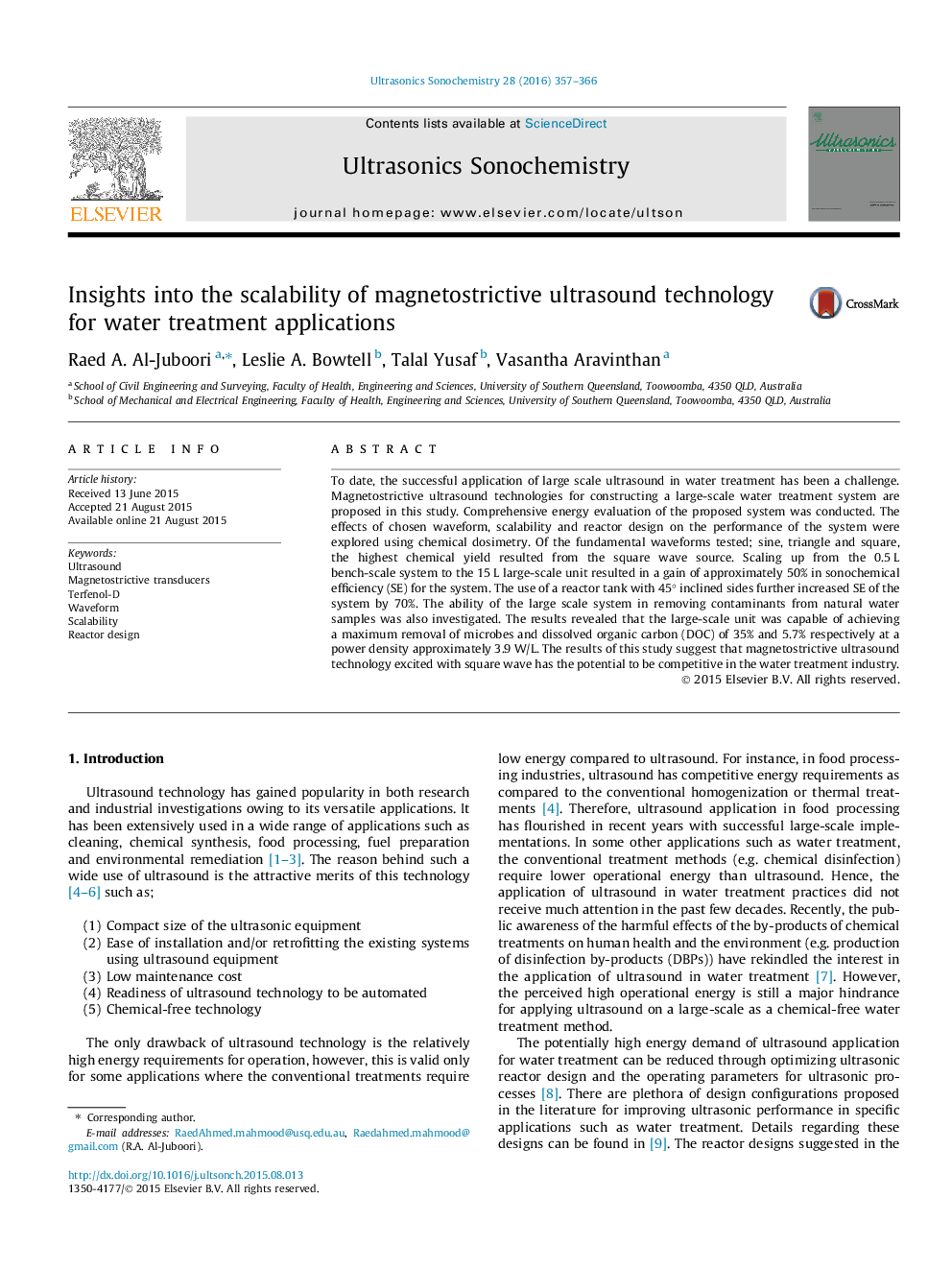| Article ID | Journal | Published Year | Pages | File Type |
|---|---|---|---|---|
| 1266575 | Ultrasonics Sonochemistry | 2016 | 10 Pages |
•Large-scale magnetostrictive ultrasound reactor was designed and tested.•Square wave was found to be the most effective waveform.•Scalability had a positive effect on the chemical yield of ultrasound.•Reactor tank with reflection feature improved chemical productivity of ultrasound.•Terfenol-D excited with square wave improved water quality at low power density.
To date, the successful application of large scale ultrasound in water treatment has been a challenge. Magnetostrictive ultrasound technologies for constructing a large-scale water treatment system are proposed in this study. Comprehensive energy evaluation of the proposed system was conducted. The effects of chosen waveform, scalability and reactor design on the performance of the system were explored using chemical dosimetry. Of the fundamental waveforms tested; sine, triangle and square, the highest chemical yield resulted from the square wave source. Scaling up from the 0.5 L bench-scale system to the 15 L large-scale unit resulted in a gain of approximately 50% in sonochemical efficiency (SE) for the system. The use of a reactor tank with 45° inclined sides further increased SE of the system by 70%. The ability of the large scale system in removing contaminants from natural water samples was also investigated. The results revealed that the large-scale unit was capable of achieving a maximum removal of microbes and dissolved organic carbon (DOC) of 35% and 5.7% respectively at a power density approximately 3.9 W/L. The results of this study suggest that magnetostrictive ultrasound technology excited with square wave has the potential to be competitive in the water treatment industry.
